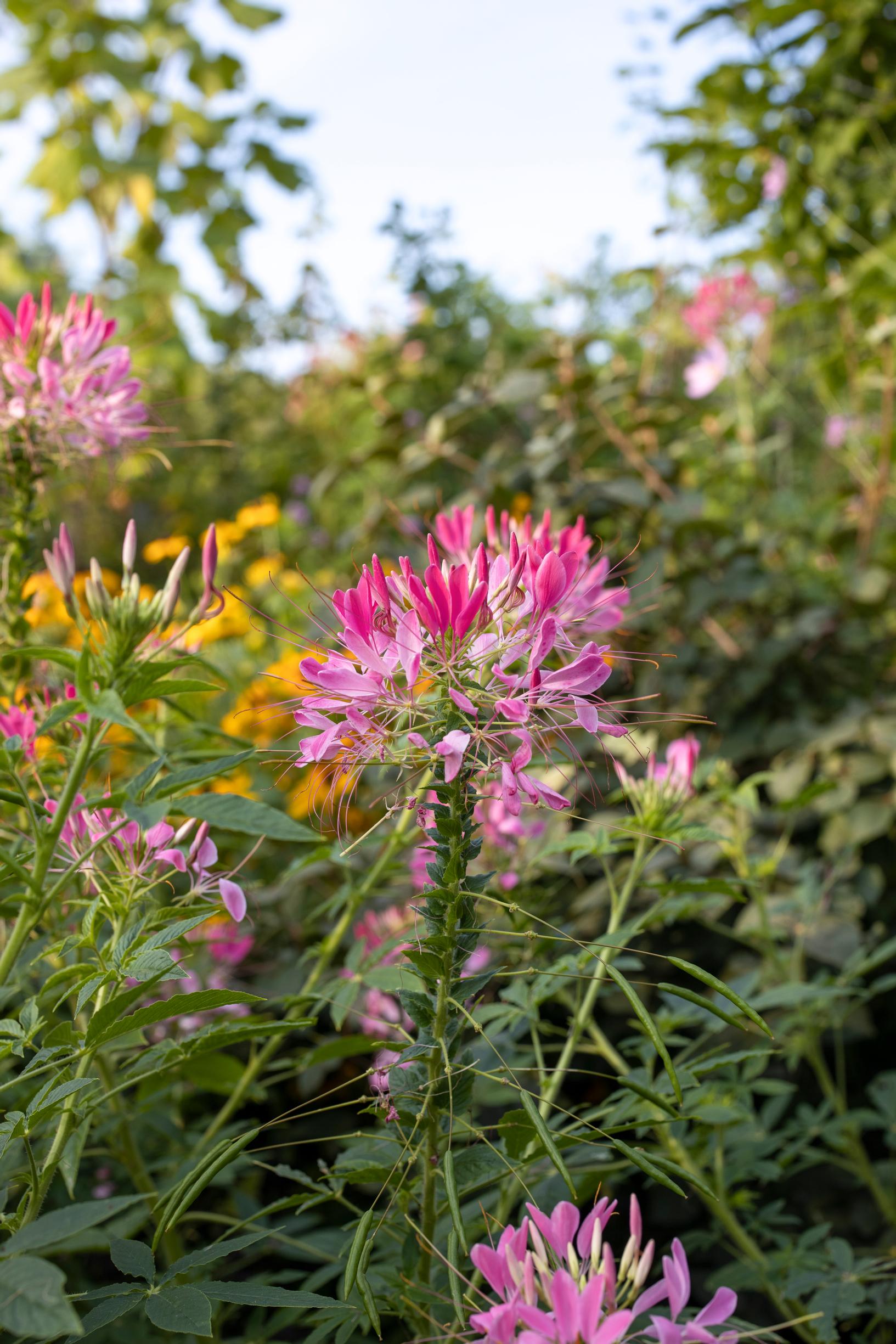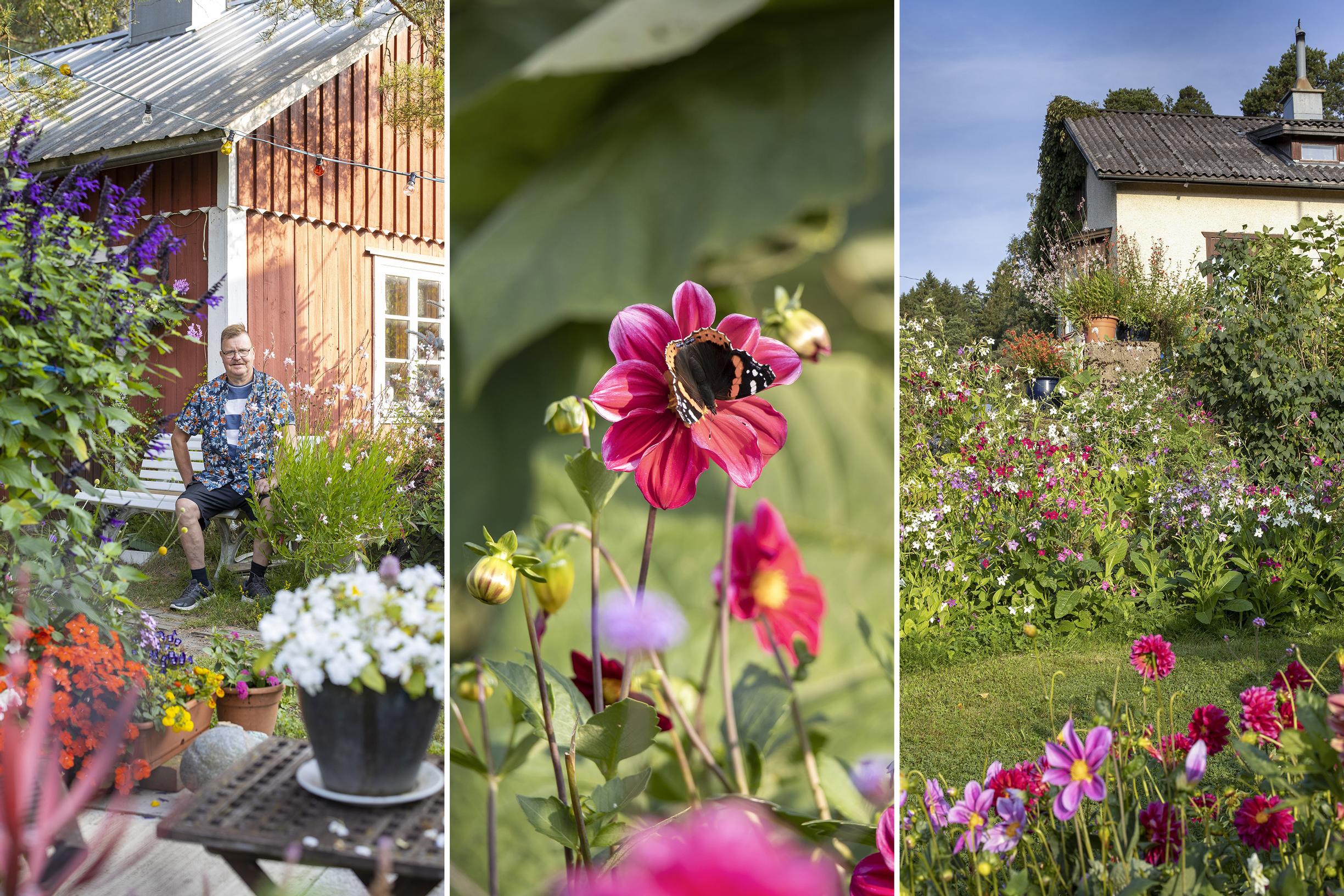
Biologist’s garden boasts pollinator-friendly flowers in full bloom: “This is a wild yard with no formalities”
Finnish biologist Timo Peuraniemi grows around a thousand summer flowers in his yard every year. Many of these vibrant, fast-growing blooms are also excellent for pollinators.
Timo, how did you first become interested in summer flowers?
I grew up in a single-family home in Sonkajärvi, where my mother had a rock garden [in Finnish]. Observing the insects and plants in our yard sparked my fascination with nature and garden plants. Those experiences shaped my career path. I’m now a retired biologist and plant physiologist, and I want to maintain the biodiversity in my yard.
I particularly love large, fast-growing, and eye-catching summer flowers. Each year, I grow 30–40 different summer flower species in both the ground and in containers, with dozens of varieties in total. Salvias, coneflowers, and amaranths, for example, all offer intriguing varieties worth exploring. Many of these flowers also benefit insects, so my yard is full of butterflies and other pollinators. I find it calming to watch the garden, where butterflies drift by and the air is filled with fragrance.
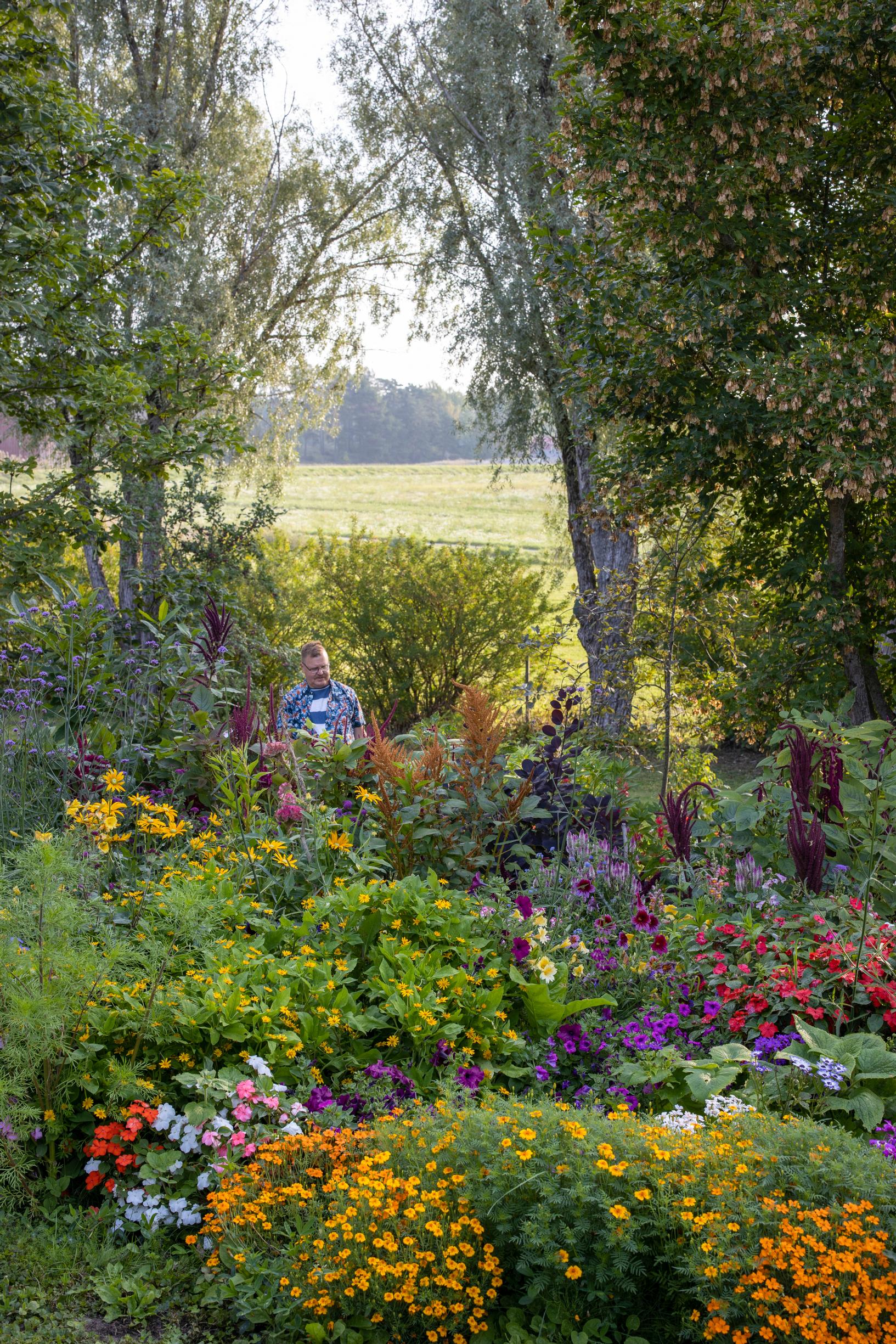
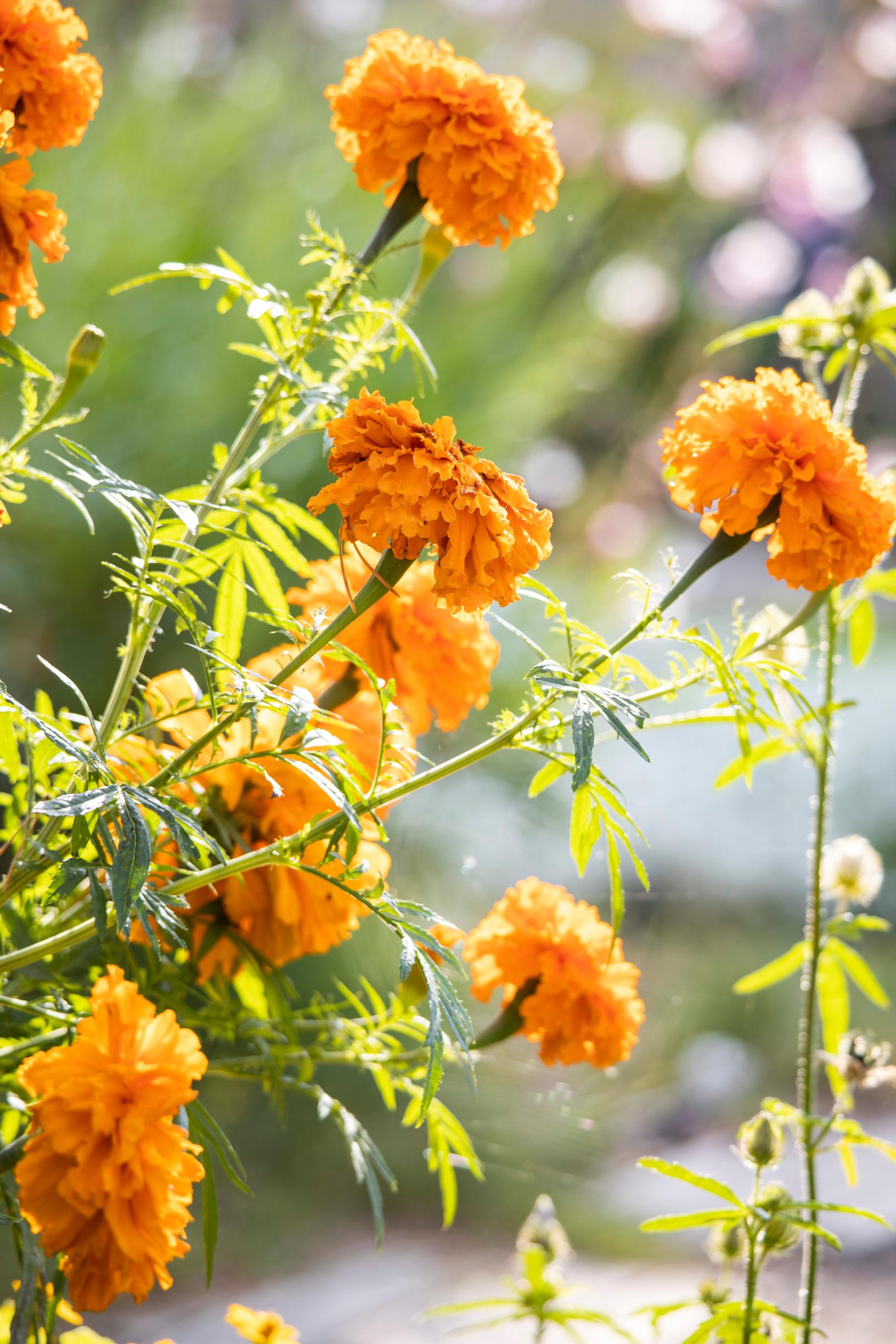
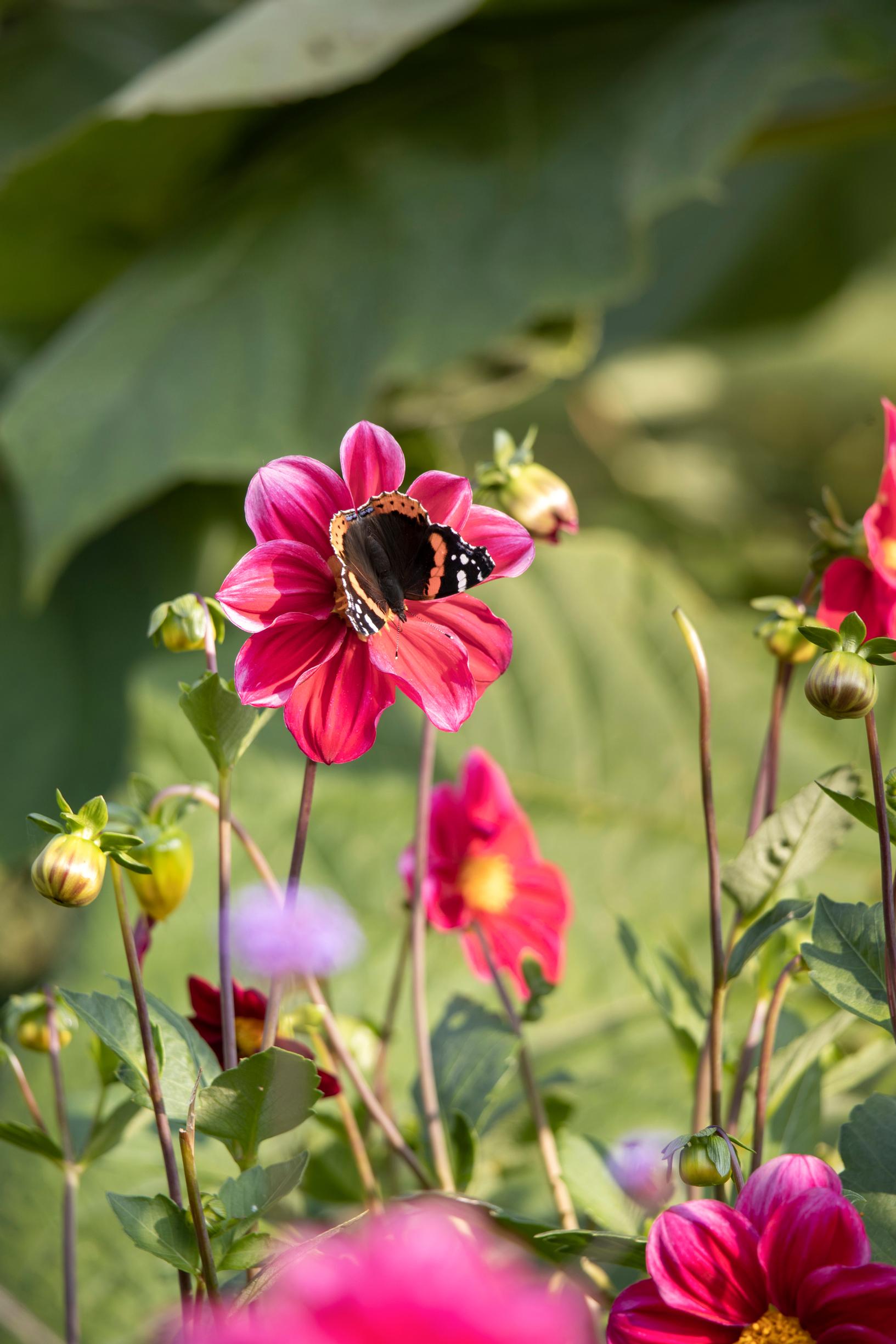
What’s your secret for growing such lush plants?
Flowers thrive on three things: sun, water, and nutrients. Large summer flowers need generous watering during dry spells. Well-aged manure keeps the soil in good condition, and cattle manure is best for flowers because its nutrients are perfectly balanced. In spring, I work in manure that has been composting all winter, and I also use it to enrich last summer’s potting soil. I fertilize with horse manure and liquid fertilizer as well.
Flowers thrive on three things: sun, water, and nutrients.
How do you arrange your plantings?
I aim for balanced groupings with complementary colors and compatible growth habits. I cluster pots close together so they gradually grow into one another. That arrangement remains all summer because stronger plants can’t overwhelm the others. In the center, I use 80-centimeter-wide containers for flowering tobaccos, tall salvias, castor beans, and spider flowers. Around the edges, in 30-centimeter pots, I often grow heliotrope, impatiens, petunias, blue daze, and melampodium.
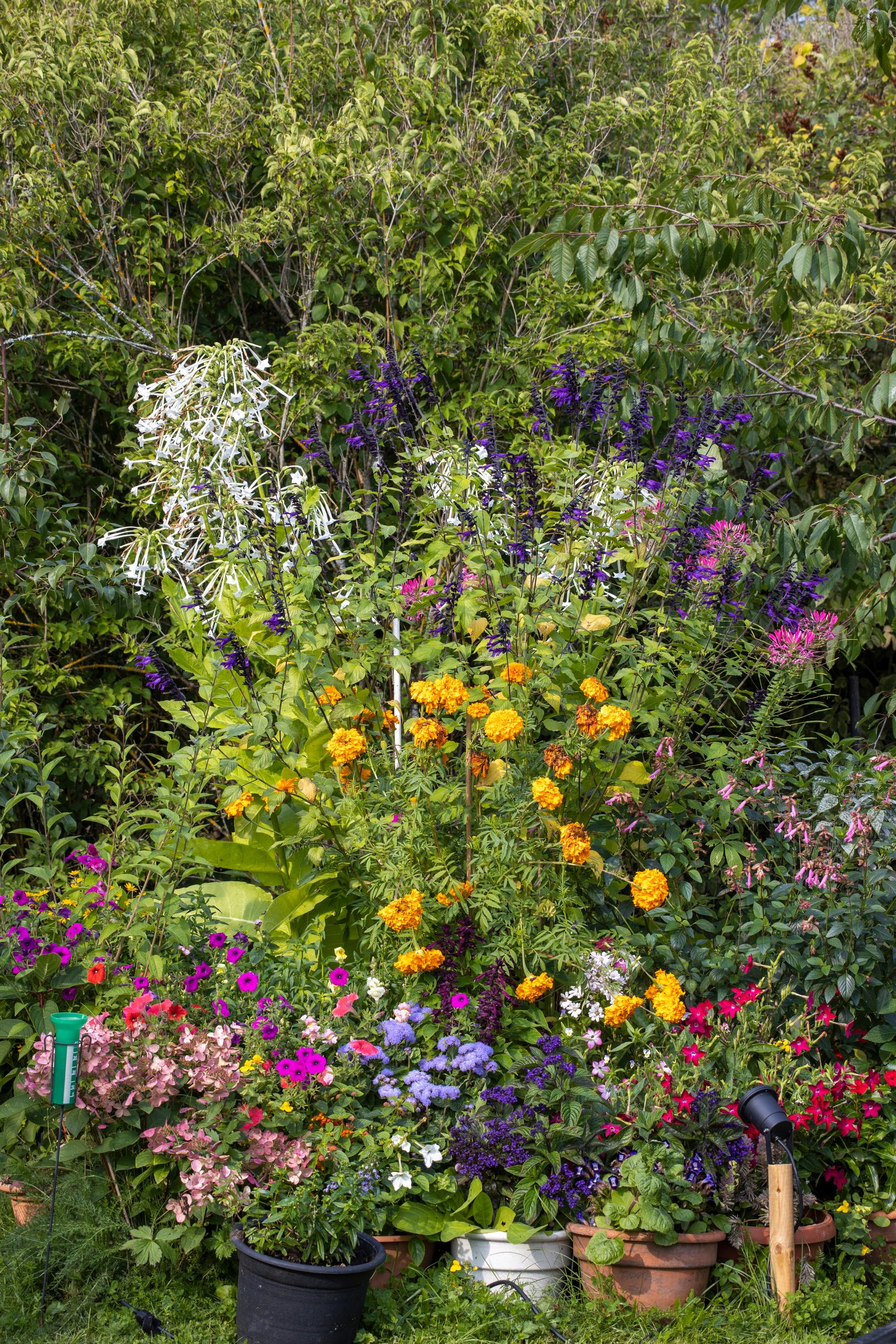
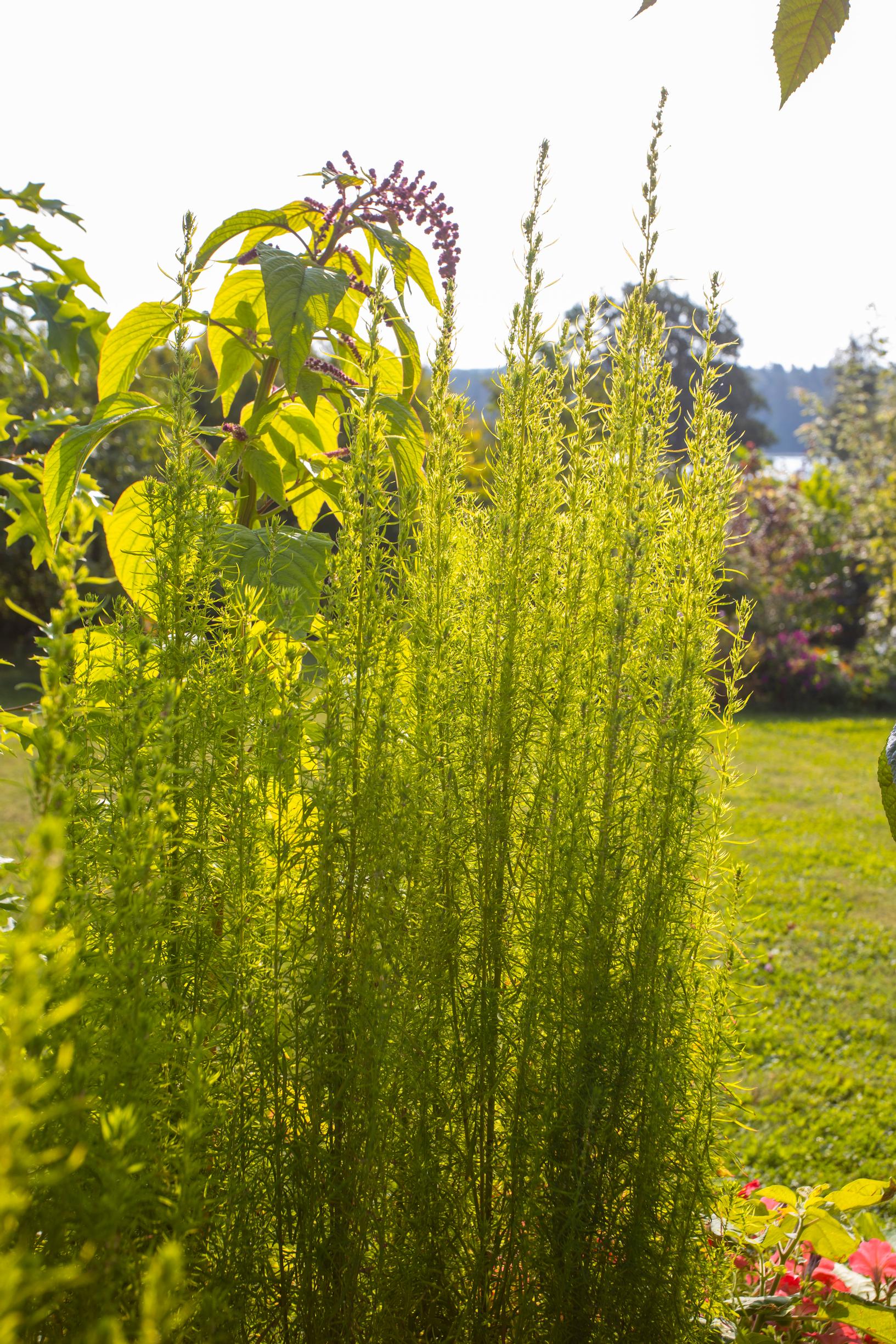
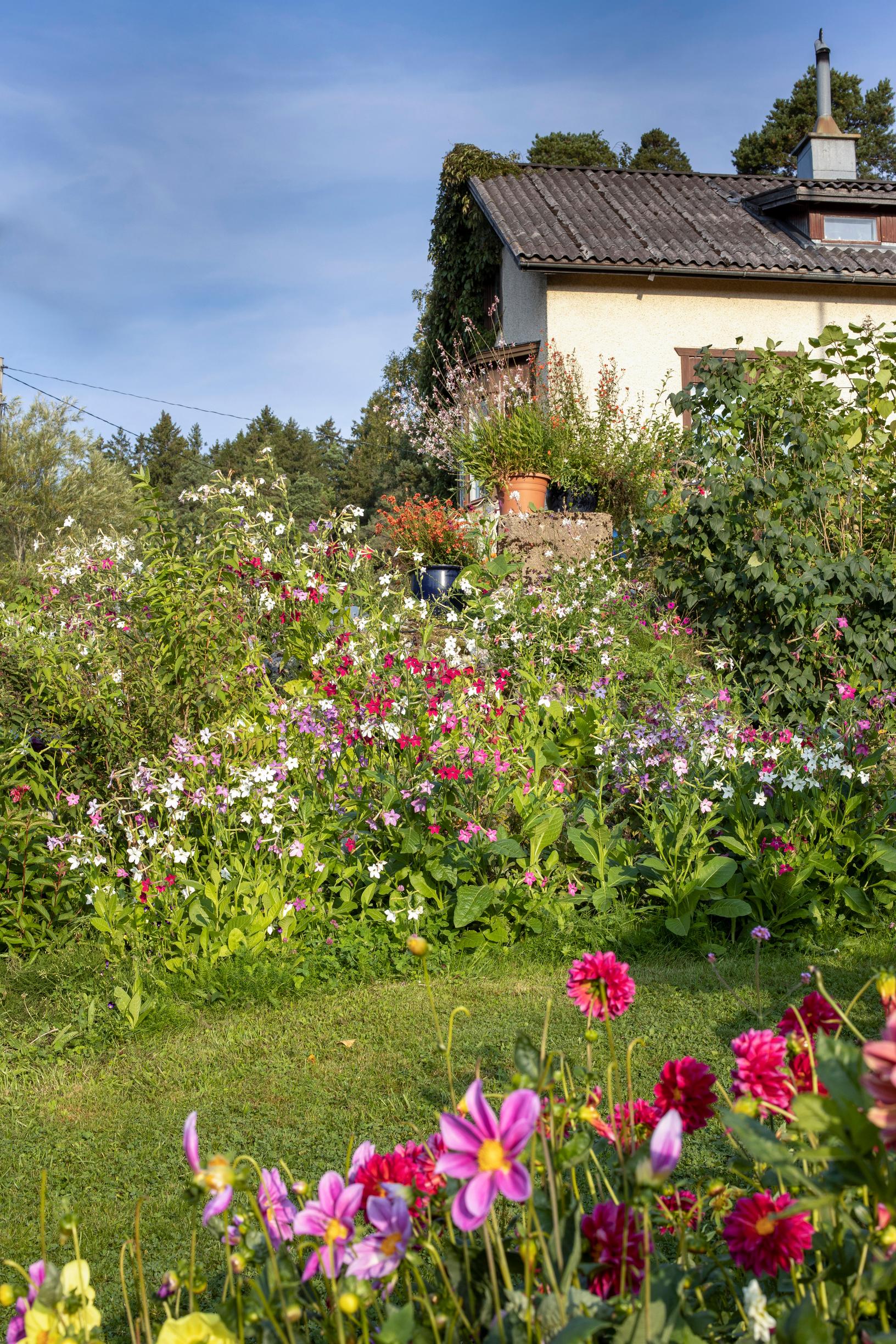
How many seedlings do you start in advance?
This spring, I started over a thousand seedlings, though I didn’t plant them all. Having extras lets me choose only the best. I begin germinating seeds indoors by March at the latest, then move them into three outdoor greenhouses in April.
I also use covered pallet boxes. In spring, I stack two pallet collars, spread a layer of rotted manure at the bottom, add some peat, place the seedling pots inside, and cover it with a lid that has a window. It essentially works like a hotbed.
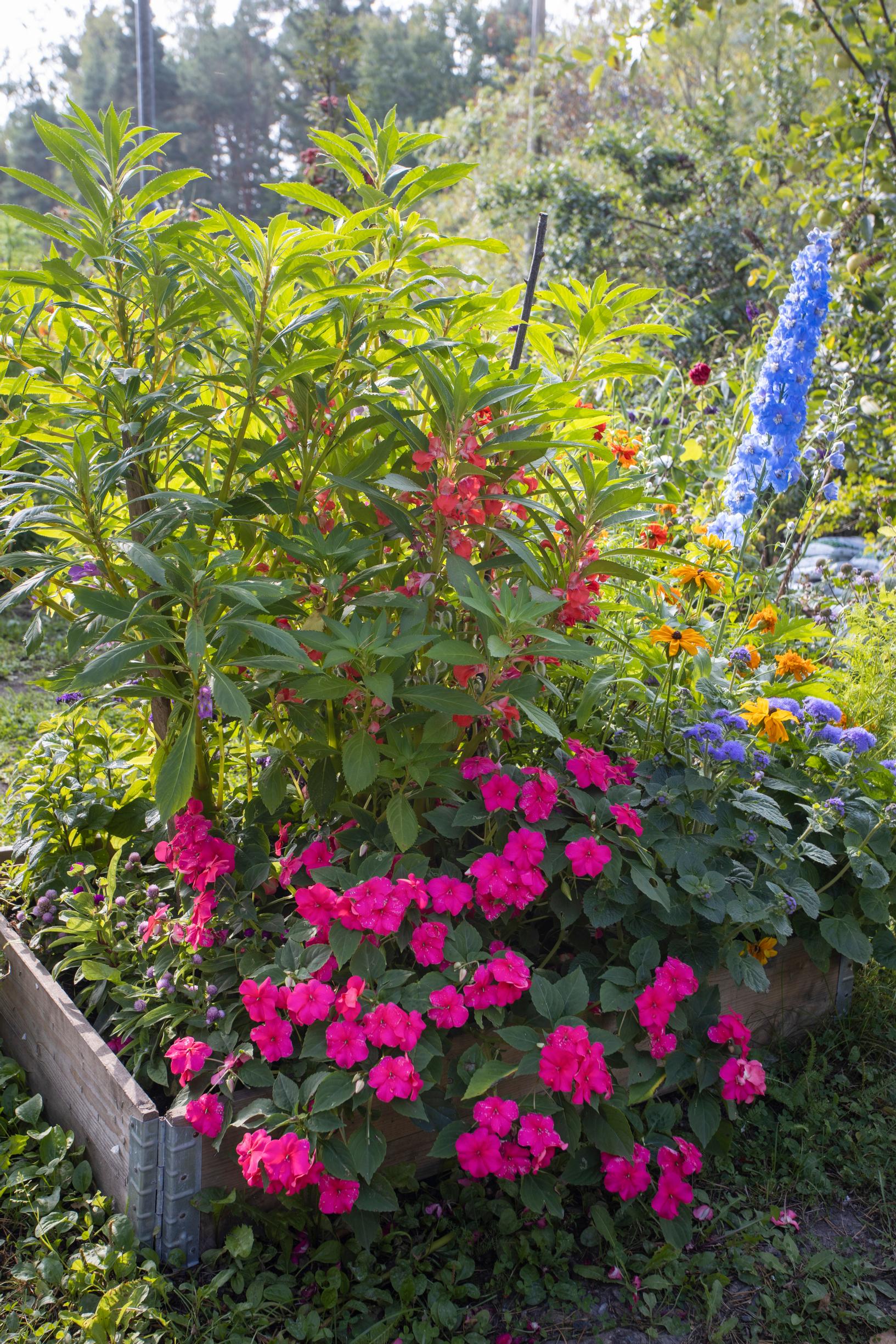
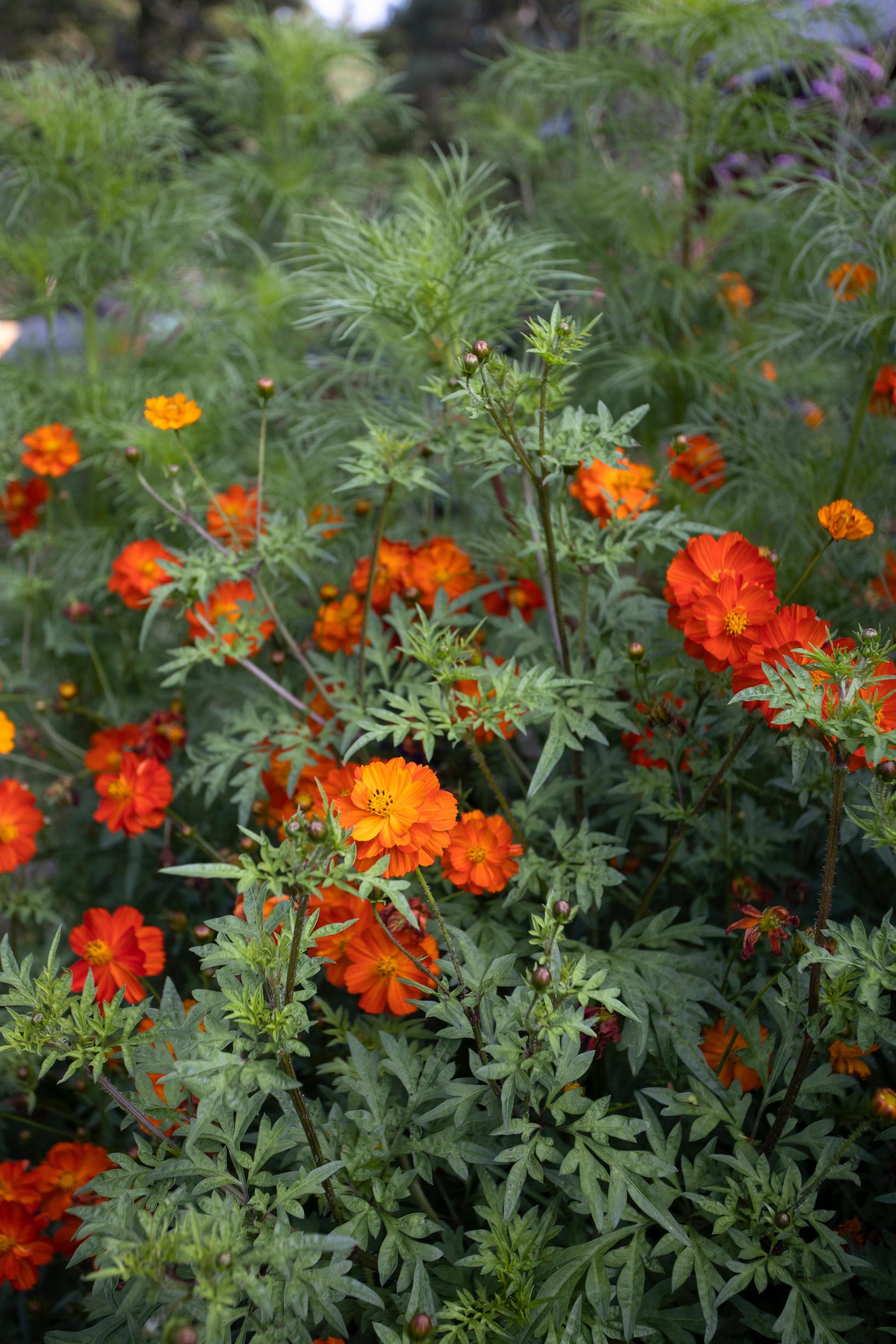
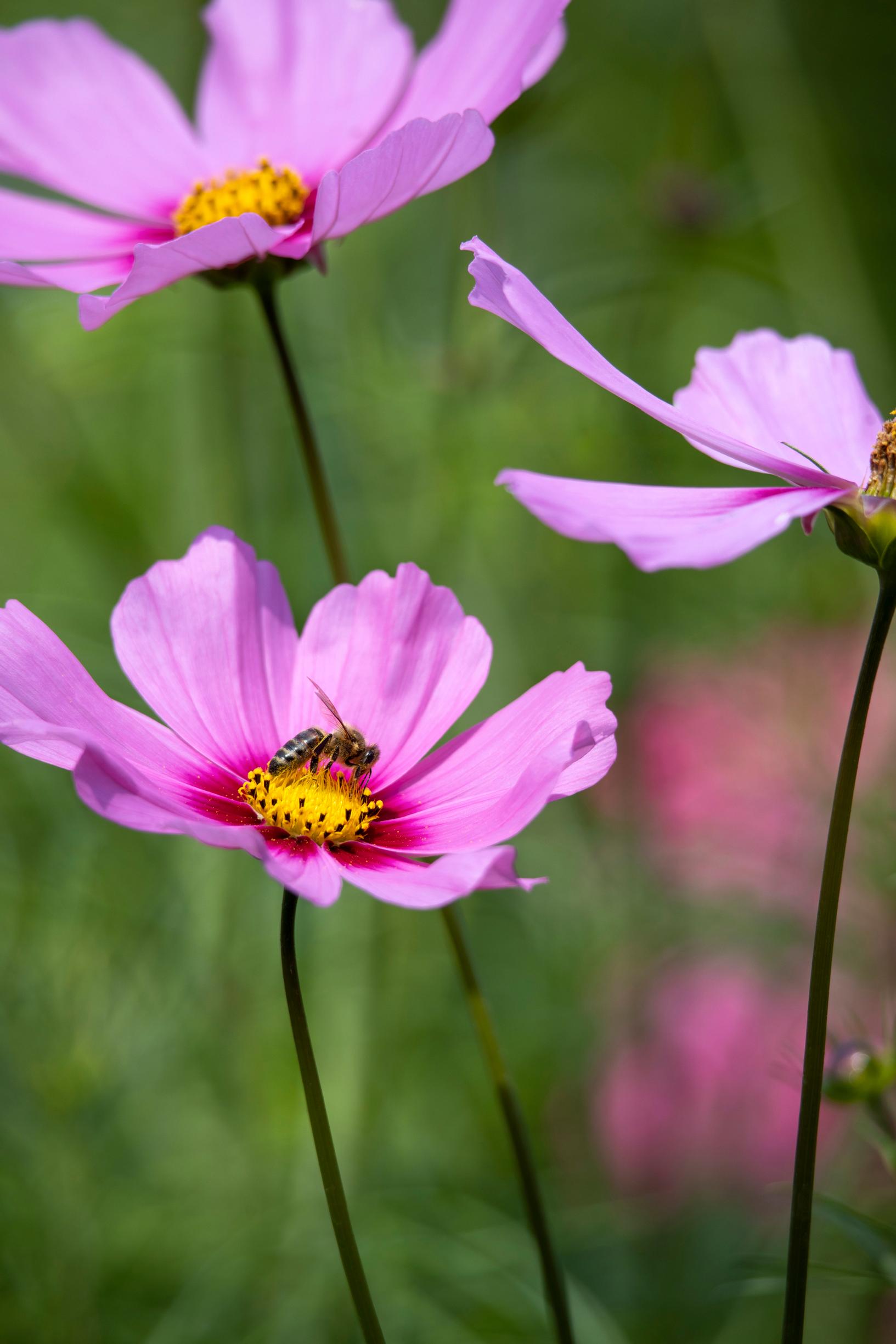
Do you have any personal favorites?
I have quite a few! Tall verbena is a versatile, upright plant that pairs beautifully with many others. For a nice effect, mix it with delicate cosmos or low-growing petunias.
Flowering tobacco is one of the most impressive summer blooms. It’s very vigorous and self-sows. Its white and red flowers give off a strong evening fragrance that draws plenty of insects. White-flowering woodland tobacco is another favorite of mine.
Several perennial salvias, though unfortunately frost sensitive, are both rewarding and eye-catching, and butterflies especially love them. I overwinter the rootstocks in my cellar and then propagate them from cuttings in spring.
Amaranths come in a variety of shapes and colors. One of my favorites is the Mexican amaranth ‘Giant Orange,’ with its long orange-brown flower clusters. They produce seeds readily, so it’s worth collecting them.
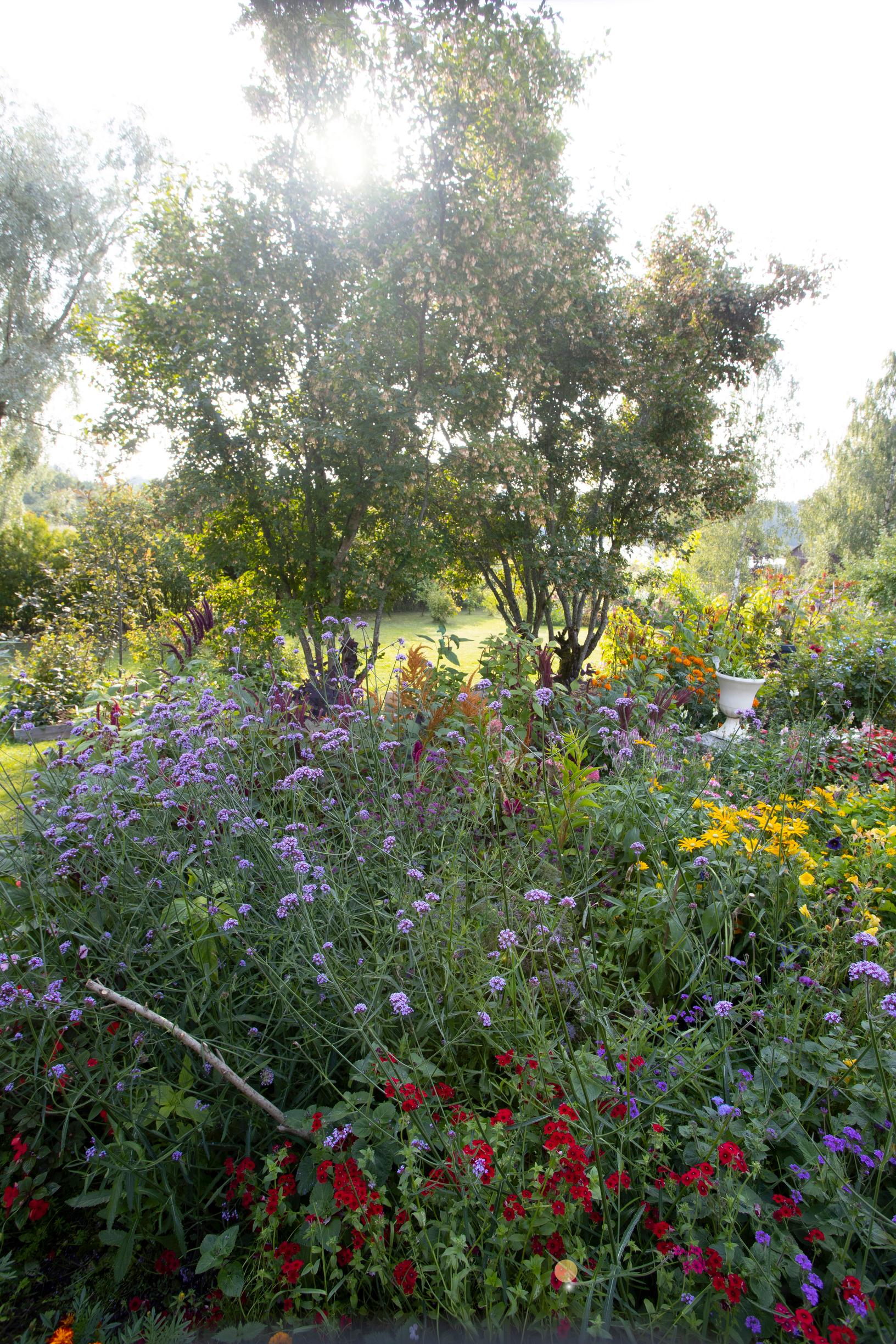
Amaranths produce seeds so easily, it’s worth collecting them.
Do you buy seeds or collect your own?
For many species, I get the most impressive plants from purchased seeds, which I buy from well-known, reliable sellers in Finland, Sweden, Germany, and France. Because of cross-pollination, seeds I collect myself can sometimes produce weak or unpredictable offspring. For example, marigolds grown from my own seeds may turn out very different from their parent plants. However, species that produce seeds more reliably, like woodland tobacco, spider flowers, and tall verbena, usually stay true to the parent.
I enjoy it when plants self-sow and spread on their own. It’s always exciting to see which seedlings appear where. My rule is that every flower gets a chance to bloom. This yard is wild and informal—just like nature.
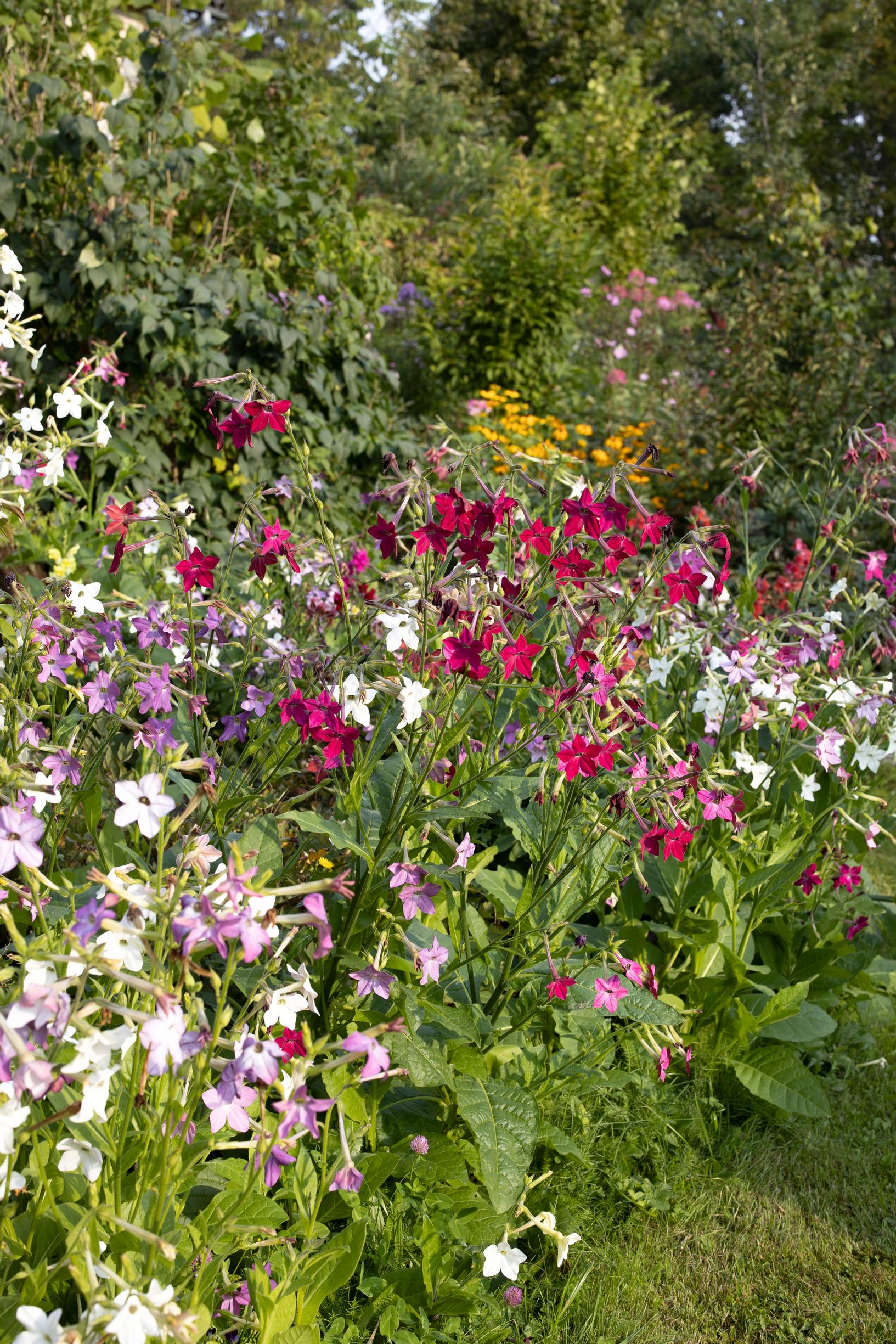
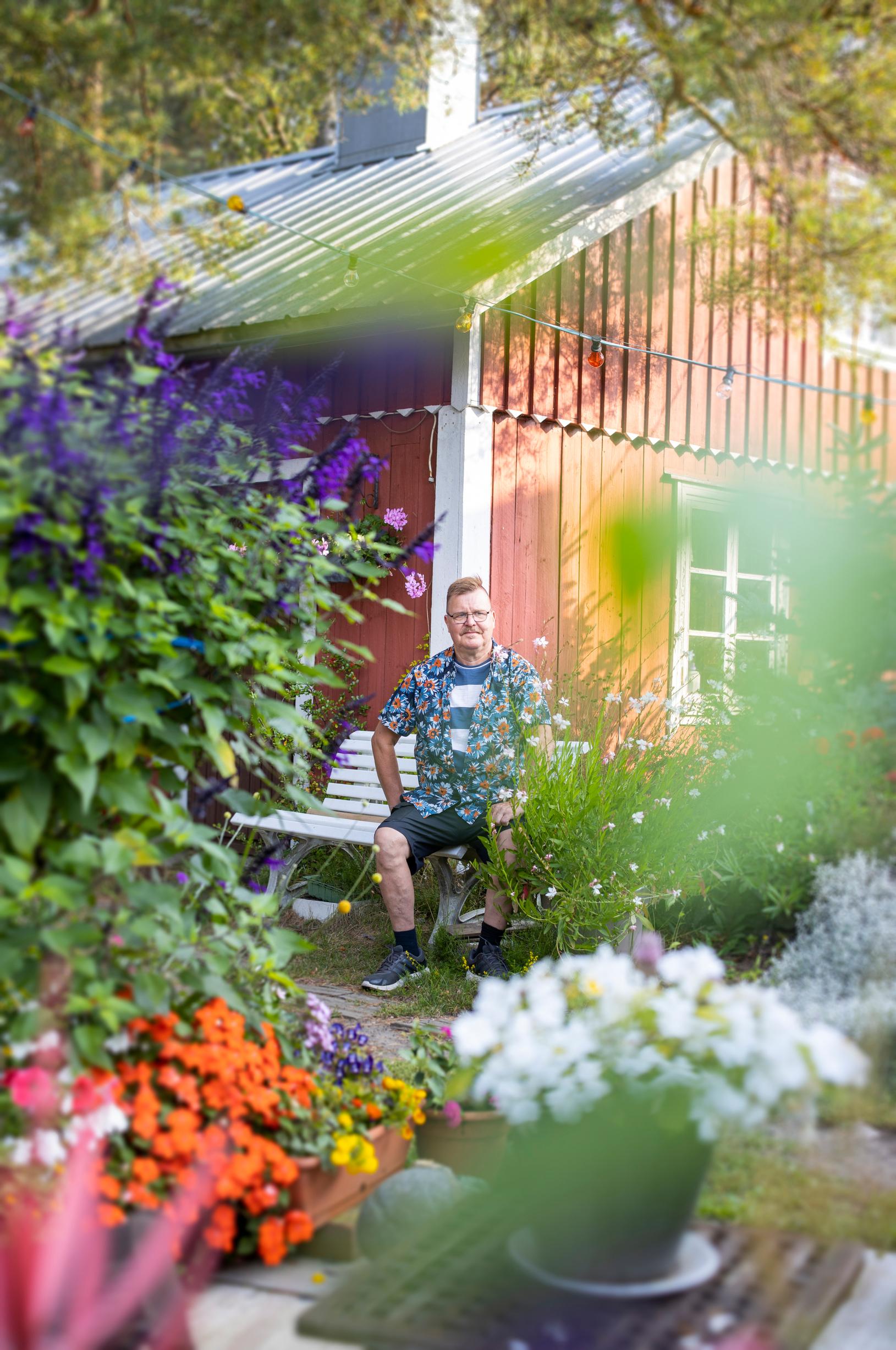
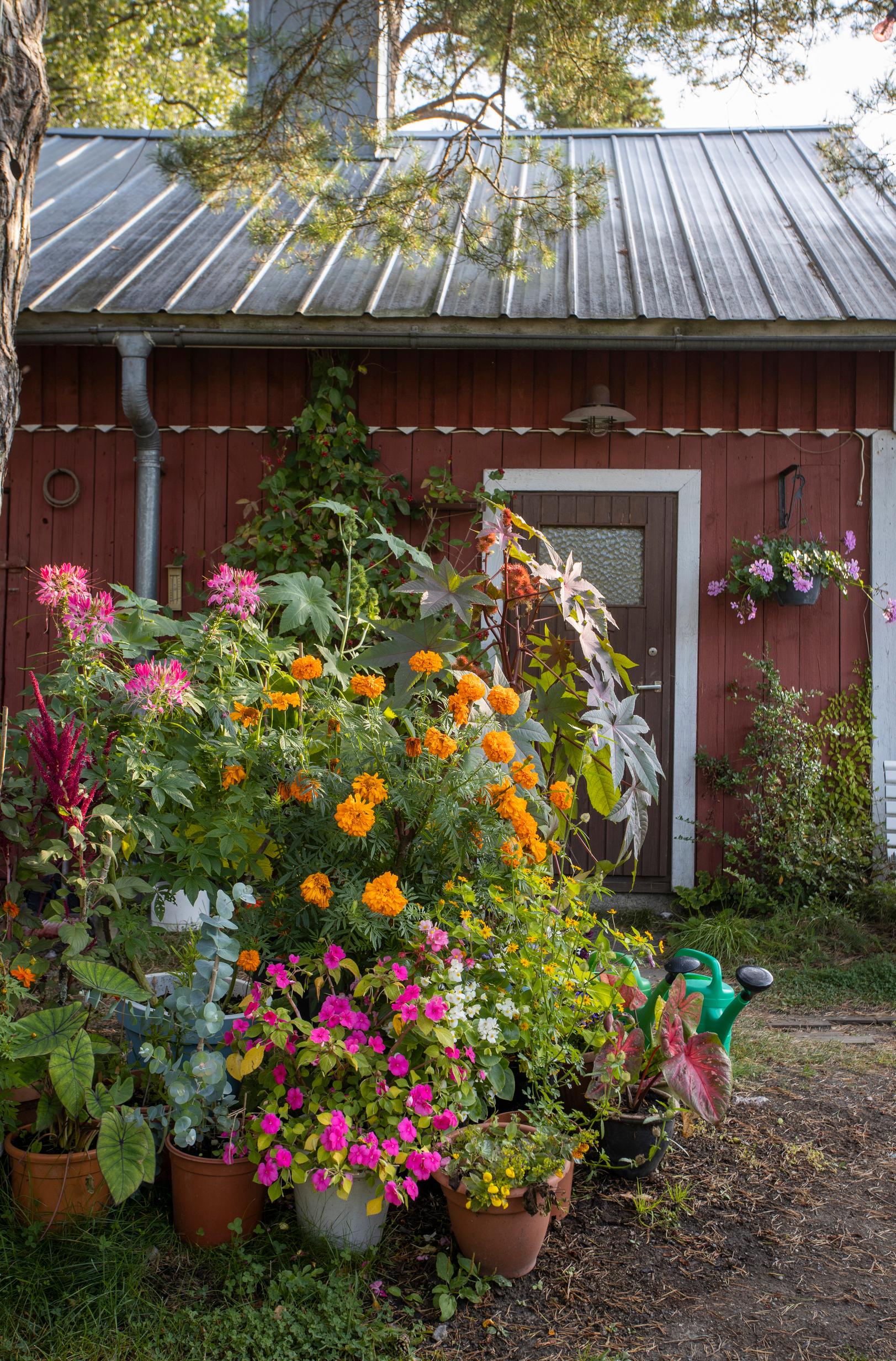
8 of Timo’s summer flowers
1. Salvia ‘Kisses and Wishes’ (Salvia)
This variety grows to around one meter, flowers through fall, and can overwinter in a cellar. It’s easy to propagate from cuttings in late winter.
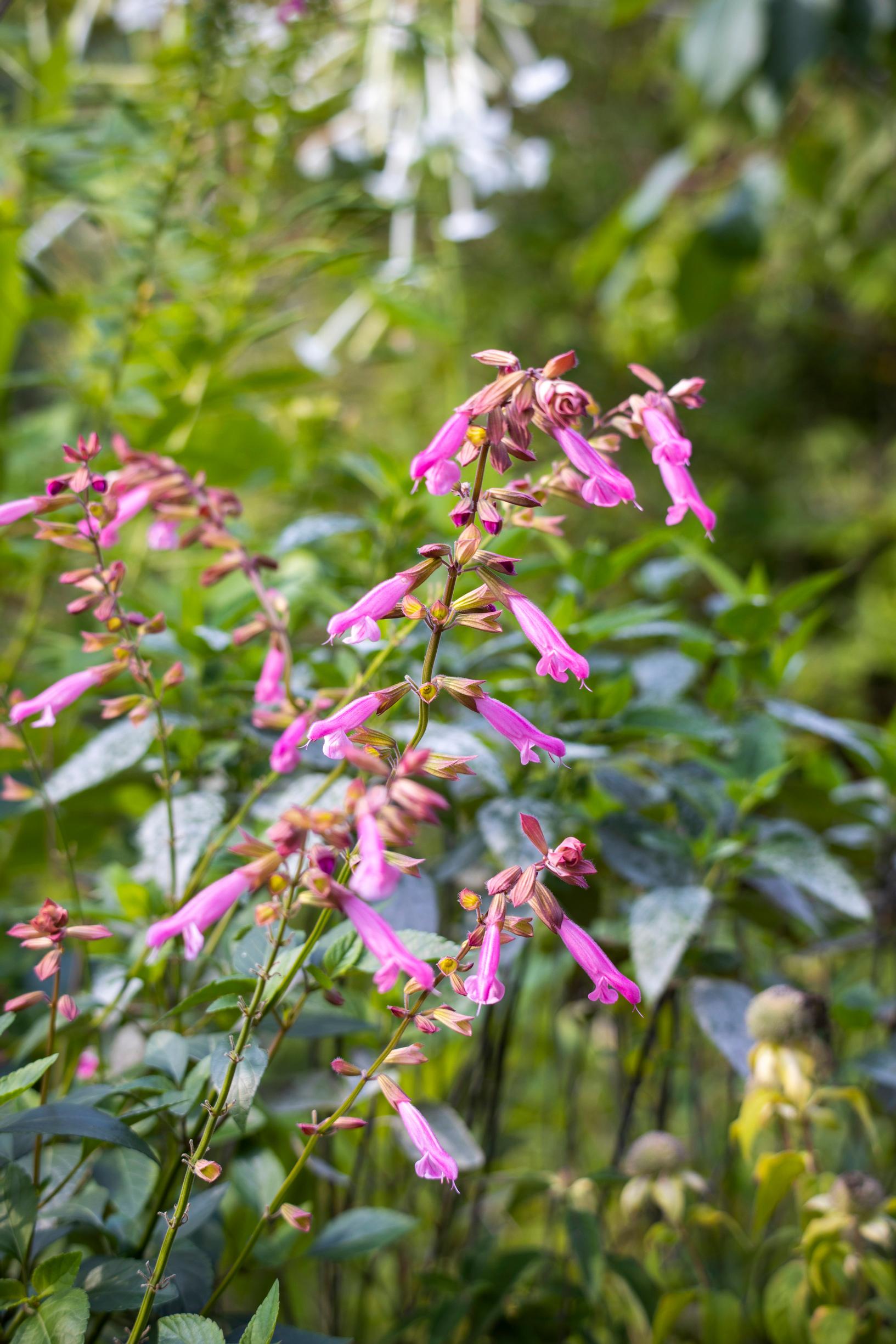
2. Red amaranth (Amaranthus caudatus)
This species is generally vigorous and easy to care for, but drought stress can lead to aphid infestations.
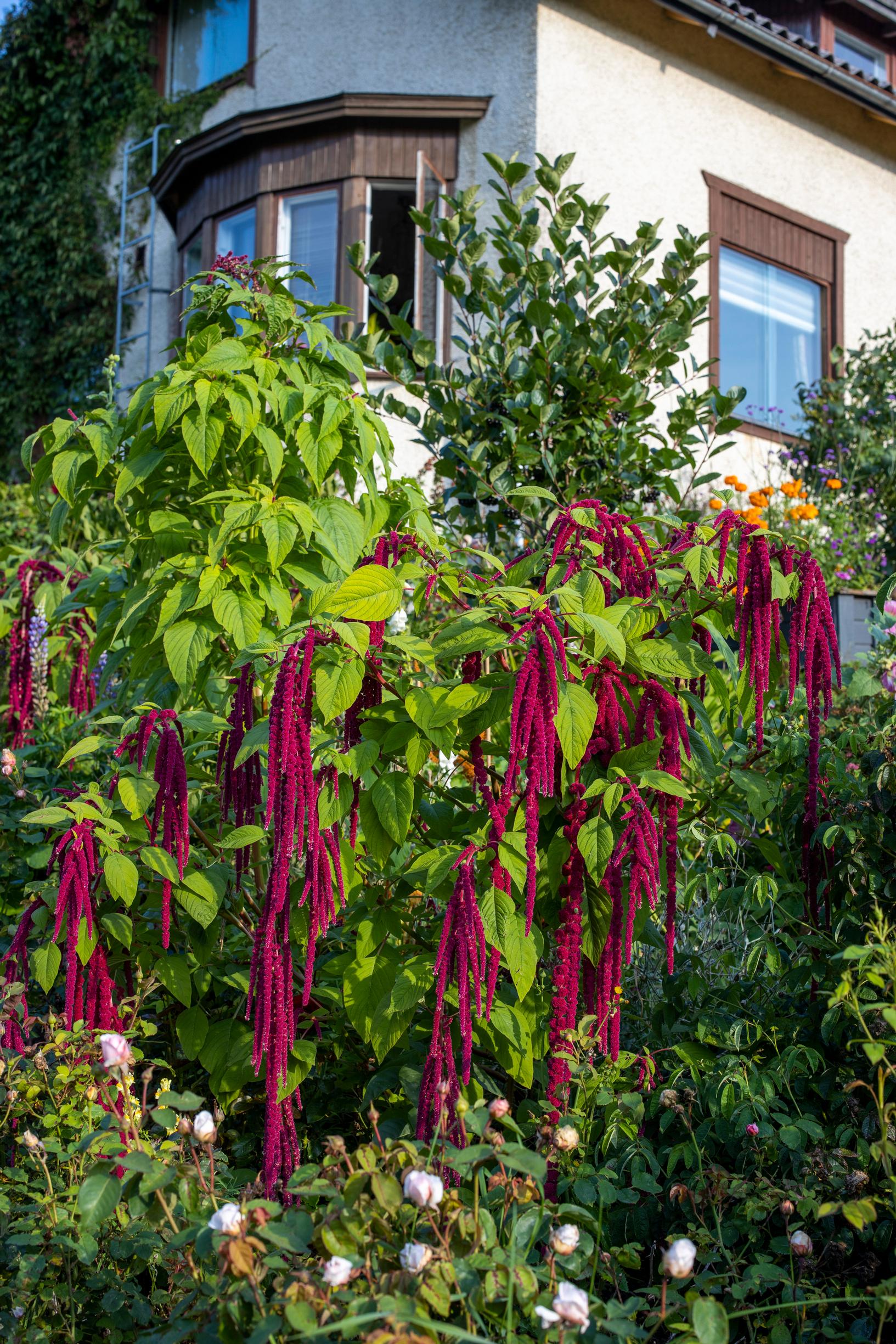
3. Elegant gaura (Oenothera lindheimeri, formerly Gaura)
Its graceful stems sway in the breeze, and depending on the variety and location, it can grow 40–60 centimeters tall.
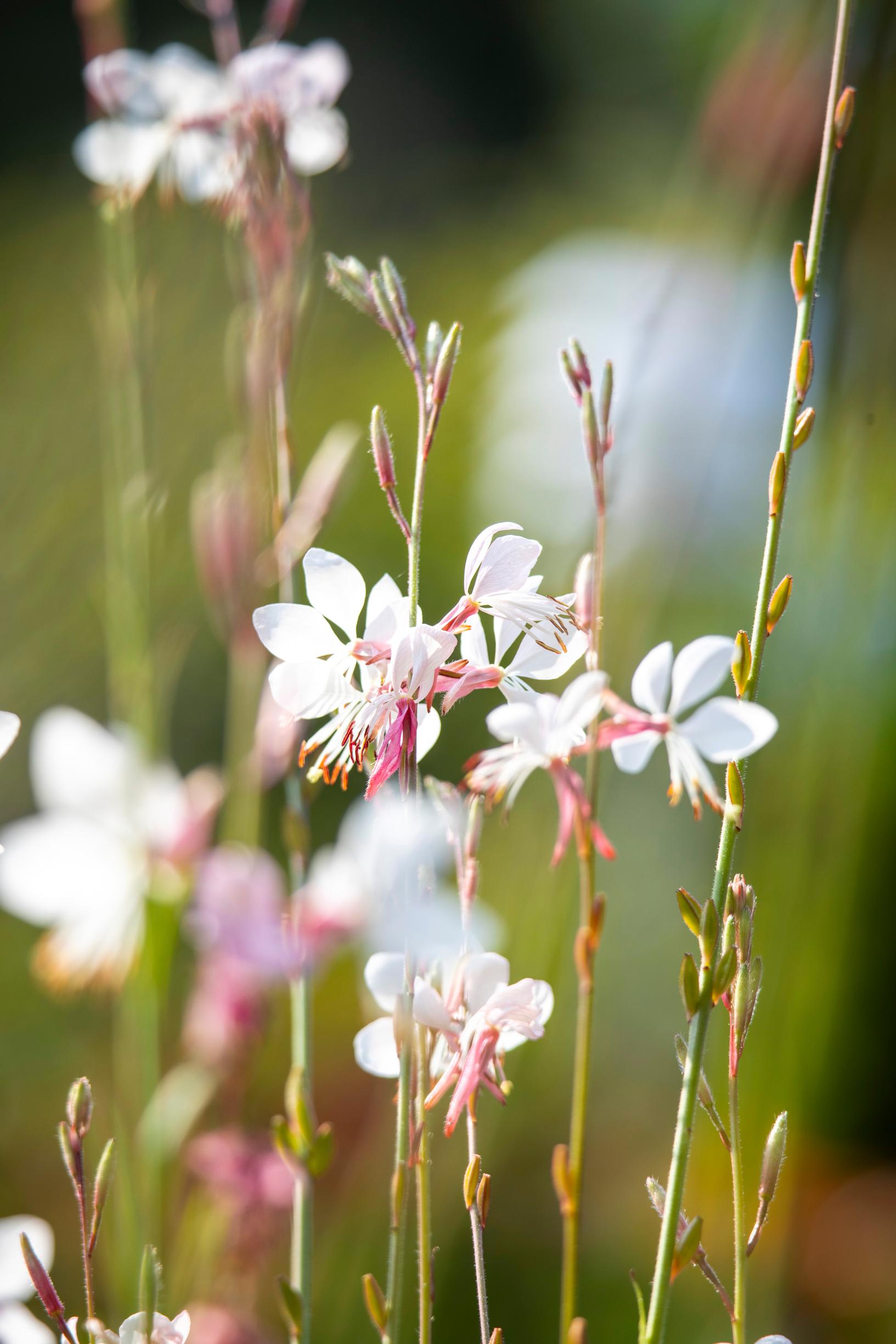
4. Castor bean ‘Carmencita’ (Ricinus communis)
This leafy spurge family plant can grow nearly two meters tall under nutrient-rich conditions, forming a shrub-like presence. It is highly toxic.
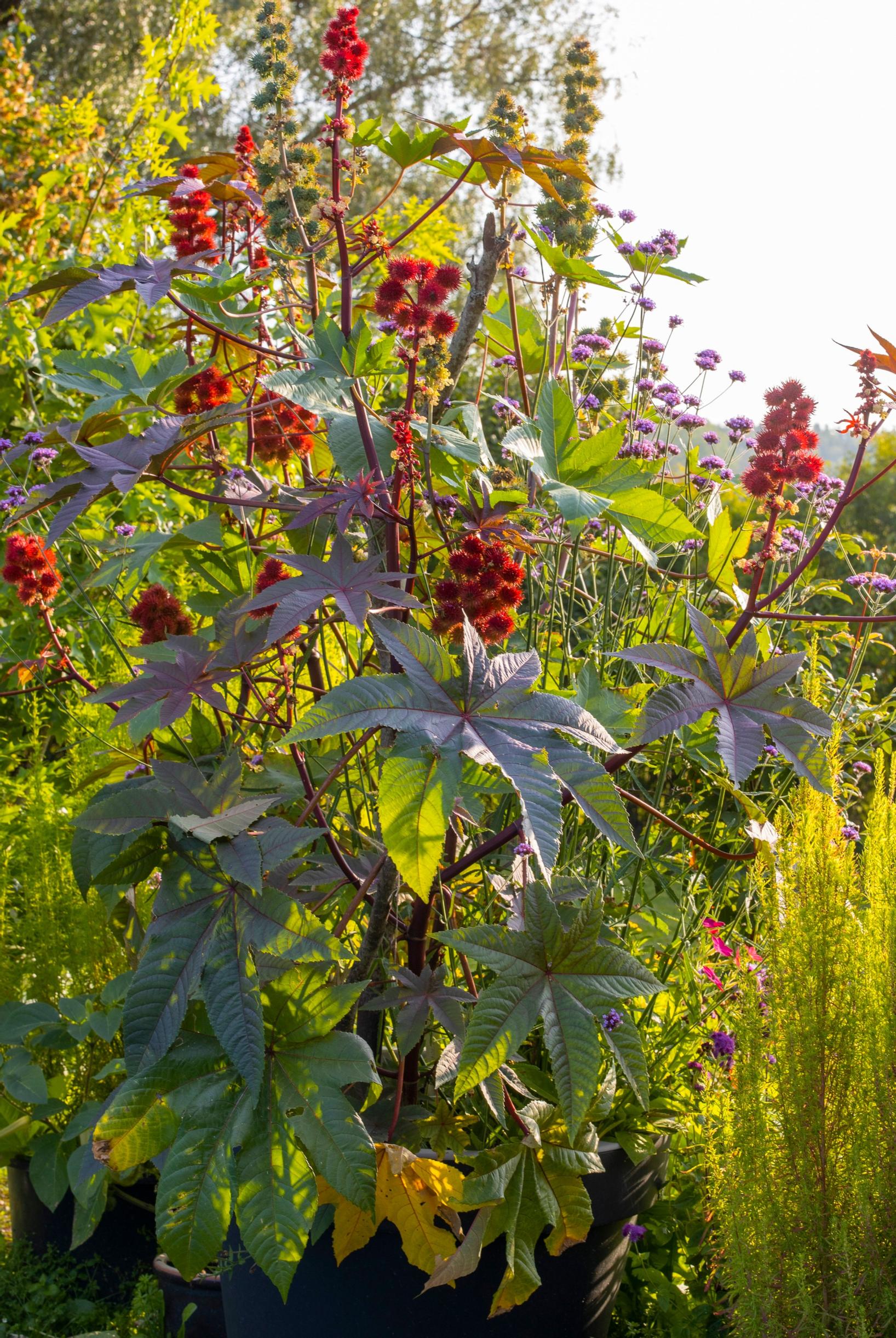
5. Tall verbena (Verbena bonariensis)
This branching species makes a striking focal point that other plants can grow through. Fresh seeds collected from mature plants germinate readily without cold stratification.
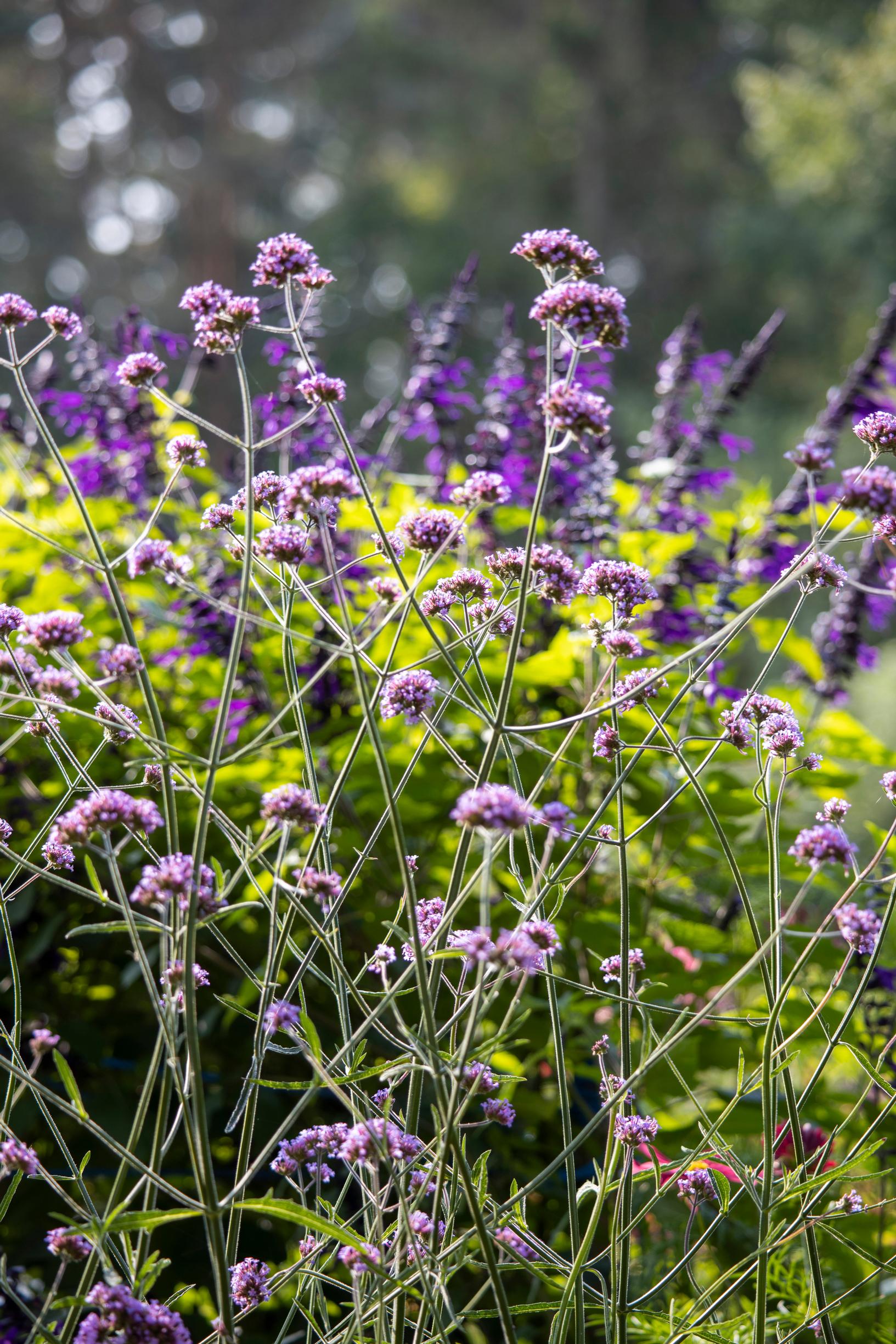
6. Woodland tobacco (Nicotiana sylvestris)
Its tubular blooms release a powerful evening fragrance that draws nighttime pollinators, and the plant produces many viable seeds.
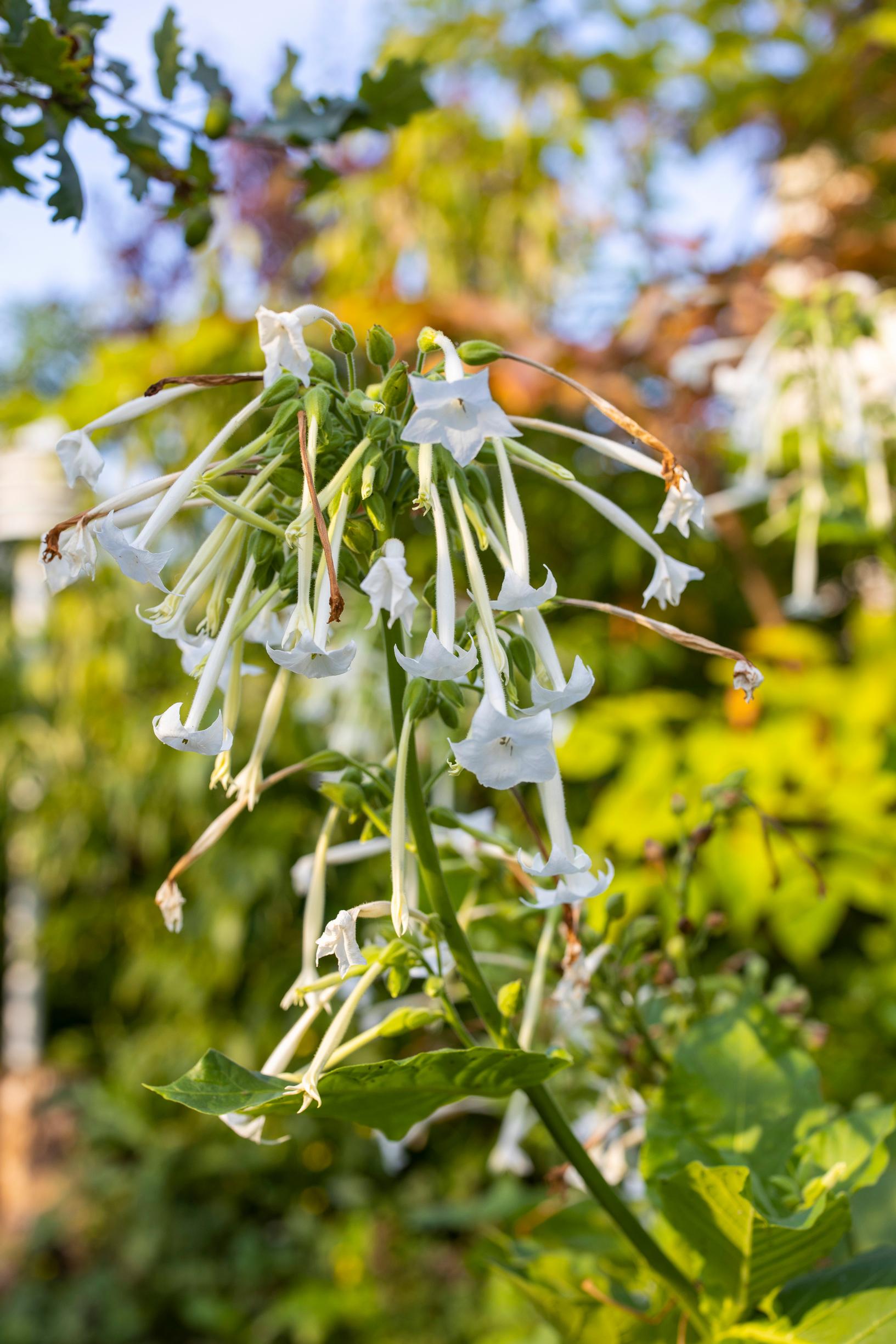
7. Salvia ‘Amistad’
This eye-catching variety can reach almost two meters in height and needs strong support. It’s propagated from cuttings, and its rootstock overwinters in a cellar.
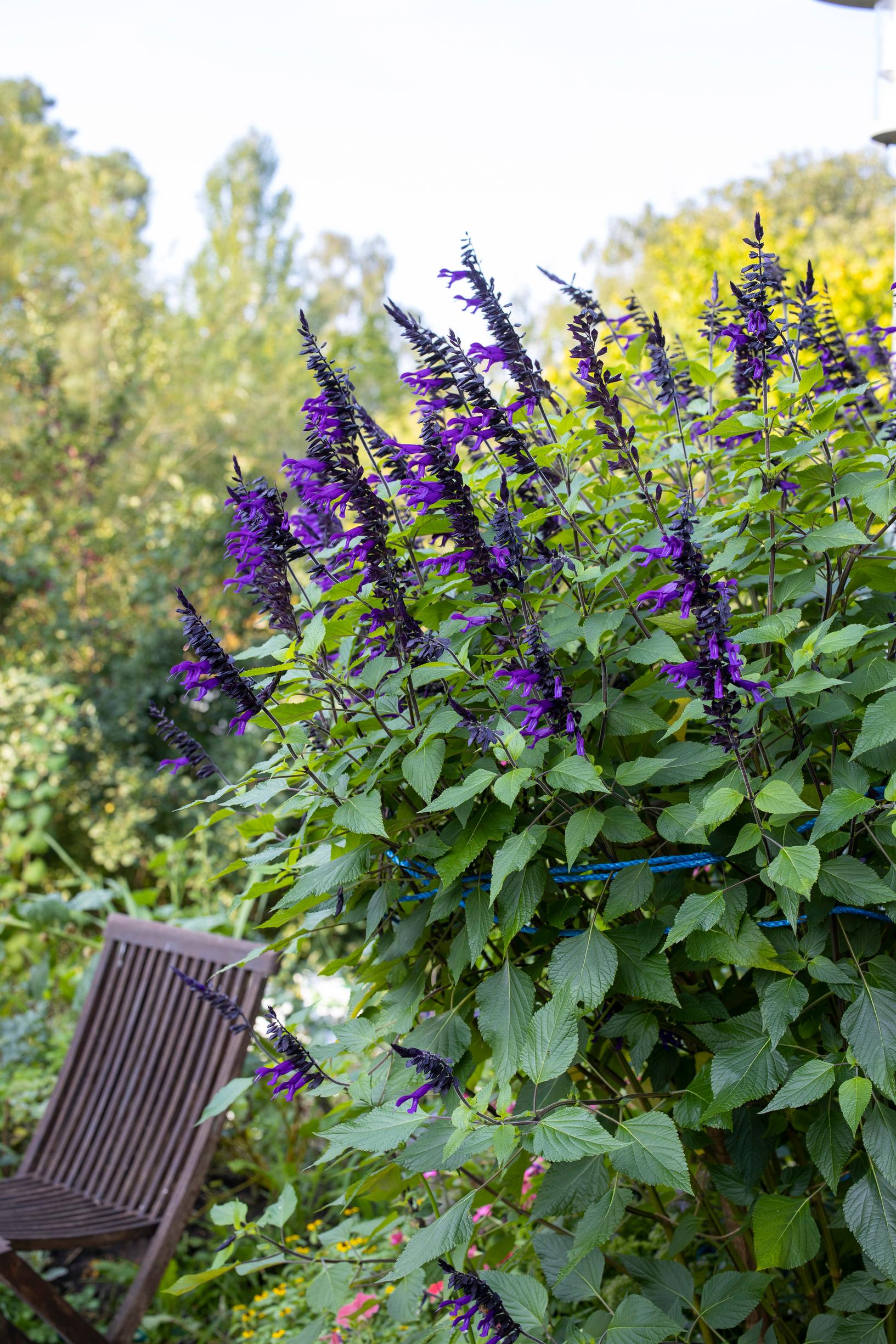
8. Spider flower (Tarenaya houtteana, formerly Cleome)
This branching species can reach up to 1.5 meters tall and tolerates strong sun well. Its blooms can be white, pink, or magenta.
